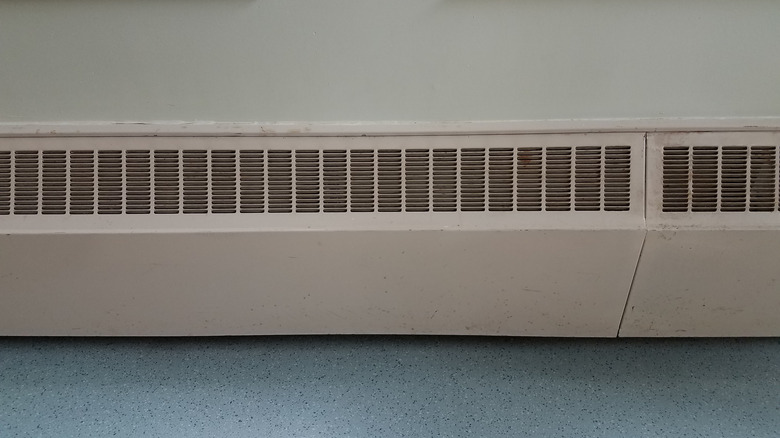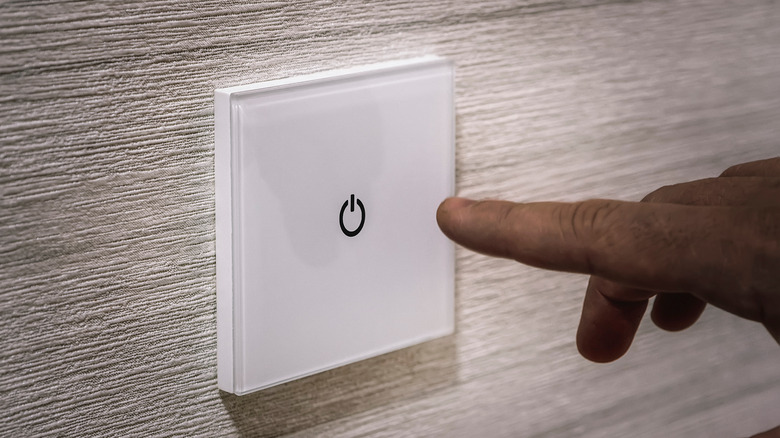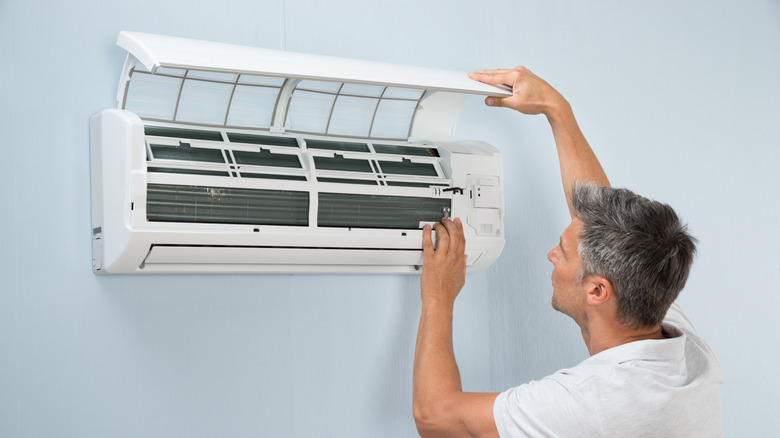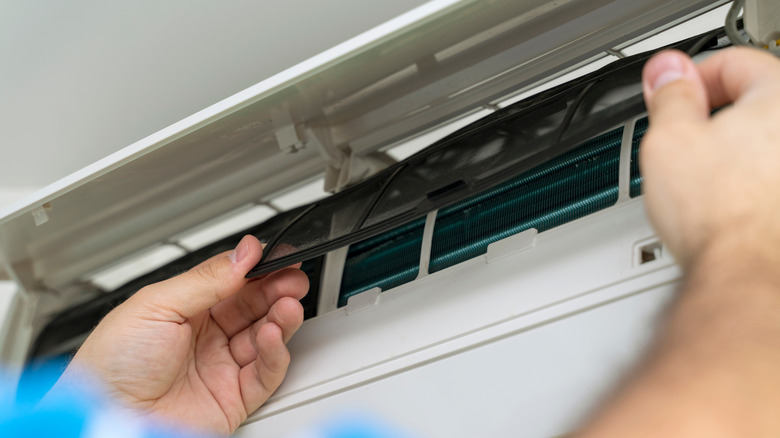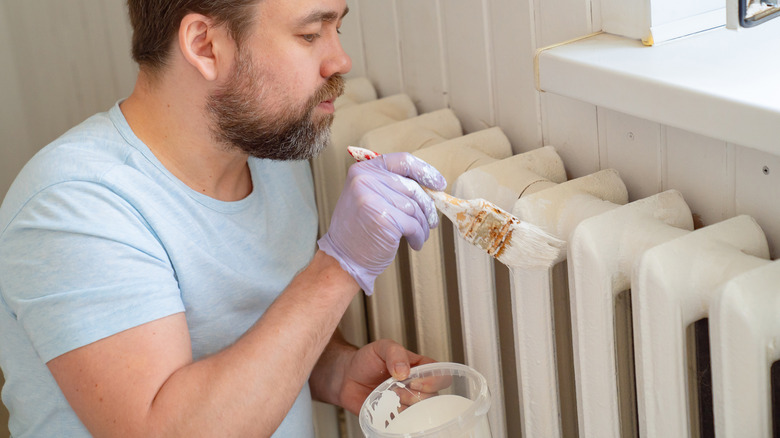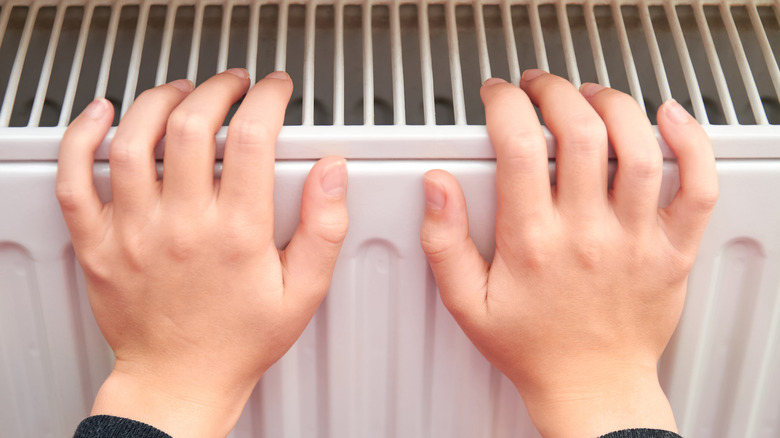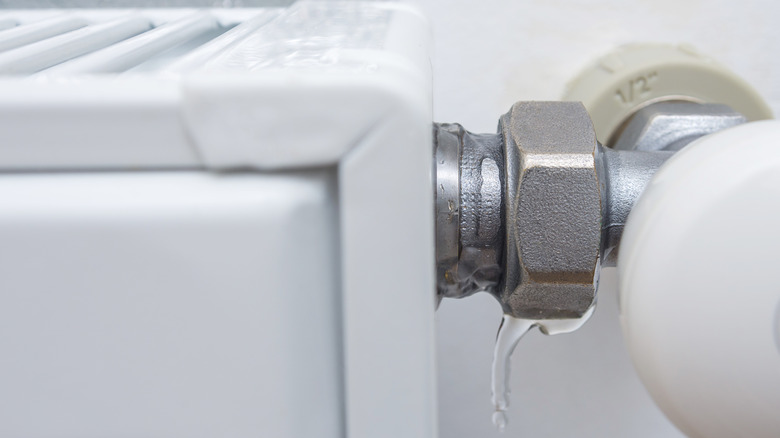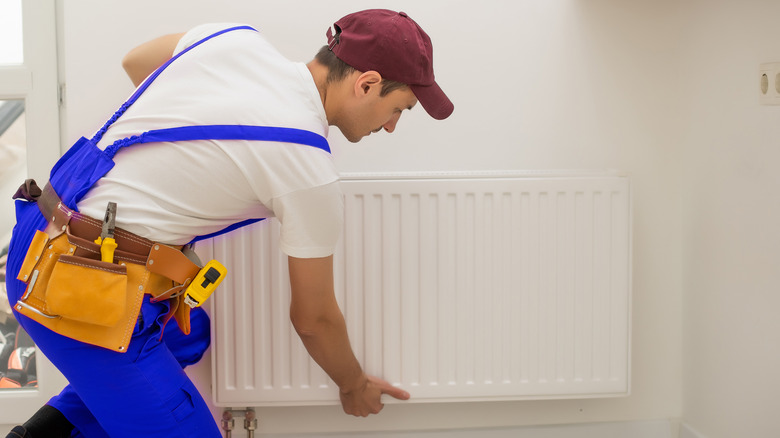Tips On Cleaning Baseboard Heaters
Cleaning is a vital part of home maintenance and installing a baseboard heater simply means that while it provides you some level of comfort, you also have one more thing to clean. It is important to clean your baseboard heaters because Today's Owner wrote that when the heater clogs with debris, it becomes difficult to use and clean. While a baseboard heater can last its warranty if cleaned just twice a year, in homes where pets are present, you are at the risk of having fur in the fins, and thus, your baseboard heater needs more cleaning.
The heater becomes less functional when it is full of dirt (or pet hair), and it radiates low. It also blows dust into the room that can leave black marks on your walls. Because of this, you'll also want to follow our guide on how often you need to clean your walls. Cleaning the baseboard heater should become a regular part of your home cleaning routine. Here is a compilation of tested and proven tips to clean your baseboard heater even with the most basic of tools and materials. All you'll need is a paintbrush, pliers, a rag or cloth, rust remover, and some cut-resistant gloves.
Turn off the heater power
A Concord Carpenter wrote that the first thing to do before cleaning the heater is to switch the power off. This is because while baseboard heaters do not make a sound when they are on, cleaning when on means it will be hot, and that, in turn, could lead to you scalding yourself. So, for safety reasons, always shut the heater down before you start doing any work on vents of any kind.
While we are all for the best interior decor, you should take care not to overdo it. You want to keep your curtains away from the baseboard heater for two major reasons. Firstly, Corner 2 Corner stated that curtains can enter the gaps in the heater, overheat and then lead to a fire outbreak in the house. Secondly, A Concord Carpenter also revealed that apart from resulting in a fire outbreak, it can disrupt your cleaning process, as you spend more time dragging the curtain from the heater.
Open the outside cover to remove debris
Debris, dust, and waste can wreck your baseboard heater faster than you think, and visible dirt gets in the way more quickly than you'd expect. This may be as a result of pet fur, kids playing, or even when you tidy up with dusting elsewhere in the home. Because dusty buildups can happen fairly quickly, it's important to set a cleaning schedule and not put stuff off for too long.
To efficiently remove debris, Residence Style said to remove the outer covering of your baseboard heater. All you have to do is gently pull the surface from its body by removing the lip first and then taking the body off. Afterward, you want to remove all visible dirt. Your next step should be employing a vacuum brush to remove all the dirt, wrote The Spruce. When done, if you still do not find your heater clean enough, you could use a paintbrush to get in between the fins.
Cover the baseboard heater
Once you are all done with cleaning all of the debris you will want to cover up the baseboard heater, but there's at least one more step you may want to take first. Try to attempt straightening up the fins before you close it up. The fins are the first thing you see when the baseboard heater is open and functioning. It is through those fins that the war,m air flows to heat up your home
Family Handyman said that to fix any bends in the fins, all you have to do is to use a pair of pliers — preferably needle-nose — to straighten the fins one after the other. Be careful not to cut yourself. For protection, put on a cut resistance glove while you are doing this part of the project. Once you are done, remember to carefully cover the heater back up.
Paint your baseboard heater
If you're not a fan of the look of your baseboard heater, or you feel like they've become discolored over the years, you can paint them. Art Radar Journal had some tips on picking the right paints, namely ones that can withstand the temperatures emitted by your baseboard heater. However, it's helpful to know that these heaters release temperatures of about 150°F- 200°F. House&Beyond wrote that the paint choice for your baseboard heater depends on the type because brands tend to generate heat differently.
For the do-it-yourselfers, EZ Snap Cover suggested a list of things you will need for painting your baseboard heater. This includes a wire brush, fine-grit sandpaper, and rust-inhibiting metal primer. The process is equally simple, just start by removing the end caps and faceplate, use a painter's tape to mask the wall and the machinery then paint. If painting is not your forte, you can also consider hiring a professional painter to do the job for you.
Replace the Cover
Sometimes, a paint job might not restore your baseboard heater to its former glory. Because of this, Bob Vila suggested that total removal is vital to giving it a nice and clean look. Not wanting to paint it isn't the only reason why investing in a new cover may be a good idea. Holes, cracks, or any other kind of damage to the cover offers up a valid reason to get a replacement because some paint won't fix those issues.
Whatever the reason may be, Networx analyzed that you can fix it by using a do-it-yourself method. They also said that there are easy replacements options out there, which include slip-on covers that don't require professional installation or tools. They slip right onto the back cover that's on your original baseboard heater. Even so, there's still always the option of hiring a professional to switch out baseboard heater covers for you when you need a new one.
Check for burning smell
Ever randomly had your house smelling like something is on fire, but you were sure you left nothing cooking in the kitchen? You should check out your appliances, especially the baseboard heaters. If you have confirmed that the burning smell is coming from this culprit, Eco Home highlighted that dust is one of the significant causes of odor coming out of your baseboard heater, which might lead to a burnt residue. As Summers & Zim's explained, the occurrence of a circuit trip is also another cause. If this is the case, they recommend you call in the professionals to deal with the issue for your own safety.
Still not sure if it's the heater making your home stinky? Try shutting it off for a couple of hours — if the smell stops, you know what to blame. It may also be helpful to check the heating machine manual and go through its possible solutions. When all else fails, call a professional. This is better than ending up with a house fire.
Check for water leakages
If your baseboard heater is a hydronic one, you should constantly be on the lookout for water leakages. And if you discover any, drain the hot water from the boiler as soon as you do. Next, Hunker described that you may want to have a replacement ready for the leak because you'll need to put in a new one, likely.
Instead of finding yourself with leaks, there are things that you can do to avoid leaks and possible damage to your heater before things start dripping or running. Qlabe wrote that the most notorious cause of leakages is the failure to winterize the plumbing and pipes that feed the heater. In the winter season, just before it starts to hit those freezing temperatures, be sure to winterize the pipes and properly insulate your home. Also, regularly check for general leakage, cracks, dents, and perforated places in your heater.
Get an expert
Expert opinion is something you always want to seek even before you get bored or frustrated at your DIYs. Indeed, hiring a competent and professional heating technician should not be underrated as you not only want your heater to look clean, but you also want it to work properly. Dale's Air Conditioning & Heating said that a clean and well-maintained heater would have fewer issues.
An expert checks and fixes your baseboard heater with tools you may not have access to that are made for this specific job. Technicians could share vital maintenance tips with you, as well, which can come in handy in the future when it comes to baseboard heater issues. However, before hiring someone, it's wise to inquire about their years of experience, qualifications, and ant certifications they may have. You can also ask them for references from previous jobs to ensure you're getting the right pros for the job.
